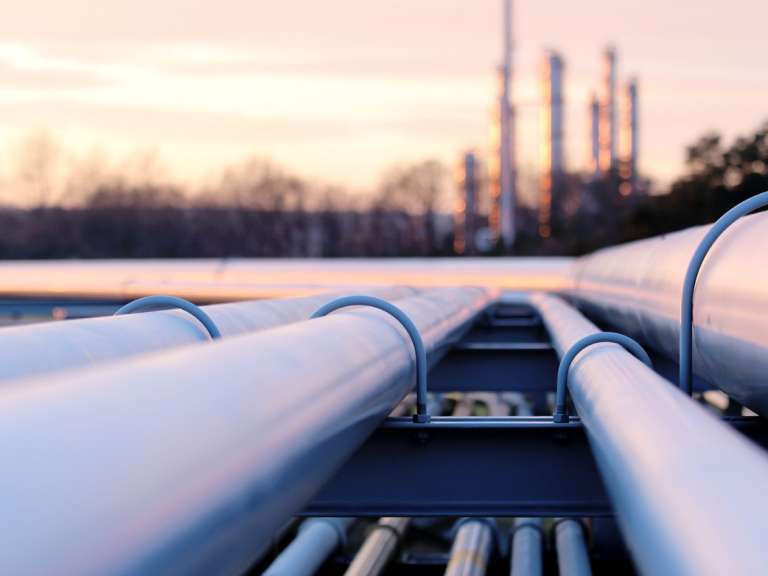The Benefits of Heating Intake Air to Improve Plant Flexibility
David AppleyardFlexibility and efficiency are the watchwords of every asset manager operating in today's evolving energy market.

In some cases, running your plant contrary to what you know about thermodynamics can drive overall efficiency gains. Heating intake air rather than cooling it may represent an energy efficiency paradox; however, the benefits of heating intake air during part-load operation can enhance overall plant flexibility.
Flexibility and efficiency are the watchwords of every asset manager operating in today's evolving energy market. Gas turbines are increasingly tasked with operating under more dynamic scenarios, and, in many respects, energy demand is the biggest challenge facing today's asset managers. For example, in U.S. regions that have significant renewable adoption, like California, conventional thermal generation plants may operate at full power for only a few hours a day. As a result, there is a substantial premium placed on efficient part-load operation and more effective turndown capabilities.
On a typical gas turbine, output is regulated by adjusting the inlet guide vanes. However, there is a point at which closing these guide vanes affects the efficiency of the turbine compressor stages and may also introduce instability into the combustion process. Issues such as flow separation and combustion stability have a significant impact on the efficiency of the machine. If they fall below a certain limit, the machine must be shut down. However, while exploring hot-start capabilities in sub-zero ambient conditions, engineers realized the benefits of heating intake air in part-load operation scenarios.
By preheating induction air, turbine output is reduced, but it's possible for the guide vanes to remain fully open. As a result, there are no issues involving a pressure drop ahead of the compressor stages or flow separation, and high overall efficiency is possible, even at a low fraction of full-load output. While some heat is lost from the steam, or bottoming, cycle in order to increase the temperature of the inlet air, this process allows the inlet guide vanes to be fully opened, so that the compressor runs in the most efficient range.
Benefits associated with the inlet bleed heating systems used for combustion tuning also help the combustion process stay within an ideal envelope. Furthermore, this allows the turbine output to be turned down beyond what was previously possible, because the inlet volume is significantly higher. This allows the stability of the combustion process to be maintained at far lower levels. Heating intake air offers a substantial improvement in output reduction capability and, consequently, in the minimum operational load that a plant can achieve.
Inevitably, there are some cost consequences associated with the installation of such a system. An inlet heat exchanger is required in order to take advantage of this characteristic of the gas turbine. However, there are many sites that already feature an inlet heat exchanger for the purpose of cooling the inlet air, as conventional thermodynamics rules dictate. Therefore, little capital investment is required to install the necessary pipes and valves to reverse the flow through the inlet heat exchanger from cold to hot, and to install the appropriate controls. Such a system does not require any internal modifications to the gas turbine, and most of the physical installation either exists or can be developed while the machine is in operation. Indeed, such an installation has a relatively low impact on outage schedules and should fit within a standard service window.
Counterintuitively, there are multiple benefits associated with heating intake air. For example, the machine can achieve a more efficient part-load operating regime, which enables fuel savings while running in conditions other than base load. Such a machine may also turn down further, enhancing operator flexibility. This allows operators to move higher up the dispatch stack in a competitive market and ultimately run for more hours per year. This is critical in places where renewables are otherwise dominant and cause many thermal plant operators to shut down for considerable periods in every 24-hour cycle. The additional ramp-down capability enabled by preheating intake air can also reduce the number of start-stop cycles and even hot starts, which have a substantial impact on service life. This may significantly reduce the costs of maintenance and avert the costs of restarting. For asset managers, shutting off a gas turbine can cost more than running it at close to zero output, and that is a trade-off that must be considered. From a thermodynamic standpoint, preheating inlet air goes against everything most asset managers have ever learned. But for efficient operation at part-load outputs, it works.
Eradicating hazards completely is impossible, but new power plant safety innovations can mitigate risk.
Improving flexibility and efficiency at low loads can enhance steam plant profits, along with lowering maintenance costs.
Power plant managers should keep watch for energy industry trends in 2017: rise of distributed generation, fuel mix changes, digital technology, and more.